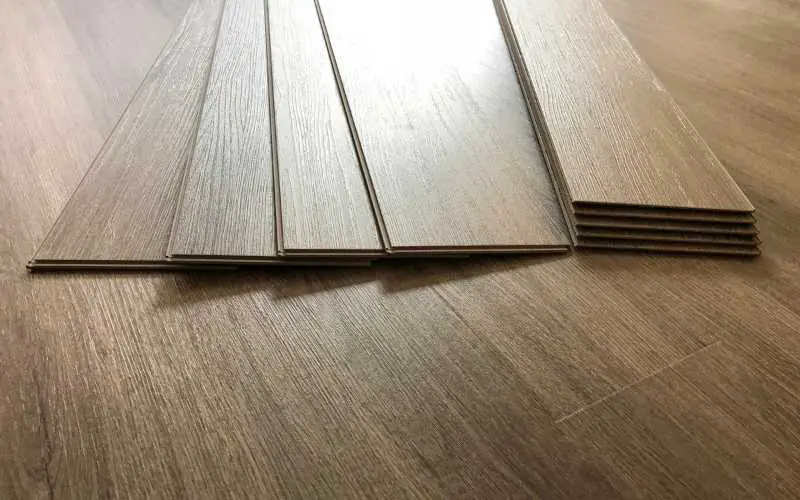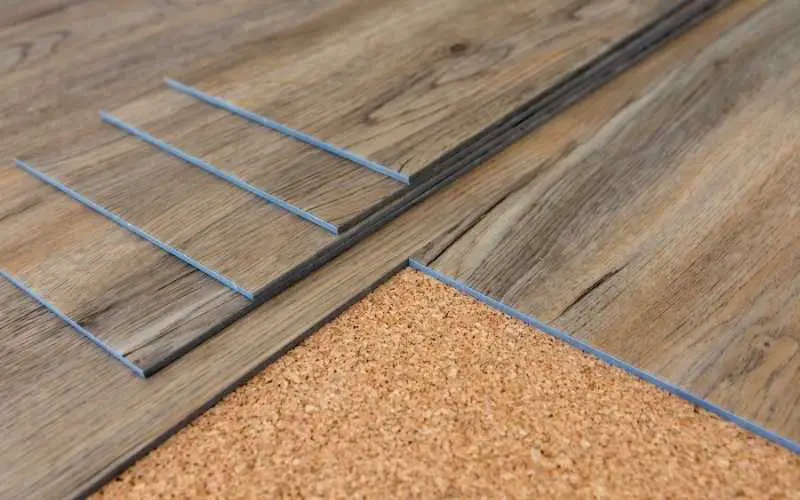Have you been experiencing buckling and folding of your vinyl plank flooring? It’s not normal, and there are ways to prevent that and keep the smooth look and feel that is normal for vinyl plank flooring.
Why is your vinyl plank flooring not laying flat? This is due to the common mistakes made when laying the planks. Mistakes such as moisture damage, high temperature, dragging of heavy furniture, and more outlined below.
When it comes to vinyl plank flooring is a type of vinyl flooring that comes in short strips which interlock. One of the bonus points of vinyl planks is that they come in interlocking strips instead of vinyl tiles and sheet flooring.
Related: Does Vinyl Flooring Expand and Contract?
Do Vinyl Planks Need to Be Flat?
Table of Contents
If there was a dos and don’ts book for vinyl plank laying, could you guess the first one and the one written in red ink on the side of the do? It would be that all vinyl planks MUST lay flat.
Nobody likes bumpy, buckled, folded flooring. one of the advantages of vinyl plank flooring over other types is its abundance of design styles. That is its appearance. If this is overlooked, it could be detrimental.
When we say flat, we are not talking of level. A flat floor can have a plane. When talking of flat, we mean zero obstruction or debris beneath the flooring in the installment of the vinyl planks.
However, we advise that the floor before the point of an installment is flat, level, and void of impurities. Also, water must be nowhere around the floor as it harms the vinyl plank and adhesive.
You want it leveled because we don’t want you walking and feeling like climbing up a hill, now do we? We also don’t forget ant the vinyl planks are in contact with each other to be at different heights.
There are certain specifications for the height differences of the floor for the vinyl planks. The standard tolerance for vinyl planks installed on the concrete floor is called.
The standard tolerance required is for the floor to be level to 3/16″ within a 10′ radius. It also can’t have a dip of ⅛” within 2′.
All these building and flooring arithmetic tell you how the floor should be leveled before laying vinyl planks on it.
Now, we’ve taken a look at vinyl plank laying flat is very important. Let’s take a look at what can be done.
Vinyl Plank Flooring Not Laying Flat
You’ve joined us to analyze that vinyl plank flooring doesn’t lay flat if improperly installed, but we’ve not considered the areas prone to moisture and heat.
This is also a way in which the floor won’t lay flat. We bring good news your way! You can fix it by leveling your floor, adding underlayment padding, and using vinyl adhesive.
Even a tiny step such as getting premium-grade planks and leaving an expansion gap to help to prevent buckling usually goes a long way.
Here are some other ways you can handle that:
Step 1
Gently heat the vinyl floor with a hairdryer (yes, hairdryer!) set to “low” to make it more flexible. Alternatively, you can use a heat gun in the place of a hairdryer.
We don’t want them to have melted vinyl planks. So the heat should stay on the surface for just 30seconds
Step 2
To fix the vinyl to the floor, the next move is to apply vinyl floor adhesive onto the back of the flooring with a putty knife.
You should take out the affected plank and put some LVT/LVP glue on the underside. Note the glue goes to the underside of the plank, not to the floor.
Read: Can you Lay Vinyl Floor Over Tile?
Step 3
The next move is a 3 in 1. You’re to place the plank gently and safely down into the floor and make sure it’s flat. Next, remove excess vinyl floor adhesive with a rag no longer in use.
Then, finally, for that added security, use a 100-pound roller to press it flat and friendly.
Step 4
If such a place where the new vinyl plank was just played is a high traffic area, then caution will be given to reduce movement over the new plank.
This will be greatly helpful as it reduces the chances of someone opening it. To keep it flat and smooth, the final move would be to place a heavy object, preferably the 2 by 4on top of the vinyl plank floor.
Secret Tip
Here is a bit secret tip;
Vinyl flooring works so well that it works everywhere, even on uneven surfaces. There is always a way to go about it. One thing to note is s that the uneven ground won’t be highly uneven, just a little.
This being the case, you’ll need to clean and level the subfloor first. The subfloor is the ground on which you pay the vinyl planks.
The secret tip to leveling the floor is either sanding the subfloor or as a self-leveling chemical, and Voila! Job well done!
We’ve known the solution to bumpy buckling vinyl planks, but without knowing the cause, it might happen again.
Here are some reasons vinyl planks don’t lay flat:
Why Vinyl Planks Are Not Laying Flat
You’ve taken this time out to read this article about vinyl not laying flat, so you are most likely experiencing it. This part is where you get to know if you are the culprit and how to save it from your end.
So your Luxury Vinyl Plank (LVP) floor is raised or not flat at certain spots, and you’re fed up with this? it could be due to
Moisture Damage
Water constantly pouring on that surface is not good enough and most importantly, when gluing it to the subfloor, make sure it is clean and dry. If not, the glue will not hold properly, and it’ll cause the dreaded buckling.
Heat and High Temperature
Heat causes expansion in the planks. For every plank, there should be expansion gaps; please take note. Most times, they don’t contract after expanding, thereby causing permanent damage.
Dragging Furniture on the Floor
Furniture is just the token object here. Any heavy object dragged across vinyl plank floors is a likely danger and threatens to damage the flooring.
Read: Non Staining Rugs for Vinyl Floors
Conclusion
When the vinyl planks aren’t laying flat, it can either be caused by human mistakes or complicated natural occurrences. Either way, when fixing it, you can lay it flat again and properly maintain it to last longer.
We wrote this article about vinyl plank flooring not laying flat, and the causes and solutions to help give you guidance when faced with the situation.
We hope you found it helpful and informative. If you did, please share it across your entire social media pages.

